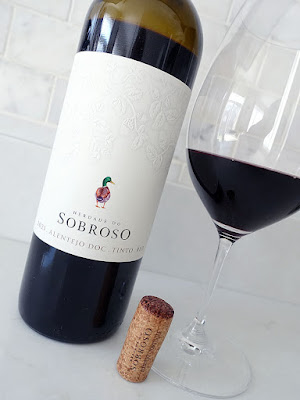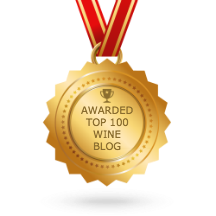red wine review is an excellent, vegan-friendly Syrah from one of Niagara's premier Syrah wine producers. It marks the first time that the LCBO has featured a Kacaba single-vineyard Syrah in a VINTAGES Release feature story as it was categorized as perfect for festive cocktail parties (and is also suitable for the table) in the LCBO VINTAGES New Release Collection.
It is produced by Kacaba Vineyards & Winery, a premium, small-batch wine producer situated on prime, winegrowing land on the Niagara Escarpment in Vineland, Ontario. It was established in 1997 by Michael Kacaba, a Bay St. lawyer in Toronto of Ukrainian descent and a Saskatchewan background. The land where the Kacaba winery resides was slated to be a subdivision, but Mr. Kacaba had other visions and began the work to establish a vineyard and winery, and only two years later, Kacaba had their first vintage in 1999 and consistent success followed soon thereafter.
While Mr. Kacaba is no longer the owner of the winery, his vision remains - to produce wines using only the finest grapes grown on the estate or from partner growers in surrounding vineyards. The philosophy at Kacaba is dependent upon on producing small quantities of wines by limiting the quantities they can handle such that they are able to manage by hand all aspects of the winemaking process. With a focus on small-batch winemaking, Kacaba is able to produce wines of merit, while also encouraging sustainable agriculture on their land and from partner growers. Kacaba has also greatly benefited from its location on the Niagara Escarpment - a slope leading to the lake bed of the prehistoric lake that covered southern Ontario - a unique geographical microclimate whereby cold air naturally flows down the Escarpment and over Lake Ontario, where it warms, rises, and returns to heat the Escarpment. This process provides for a frost-free and extended growing season, which results in longer maturing varieties such as Syrah to naturally reach phenolic maturity and thrive in this area.
This Terraced Vineyard Syrah is one of several single-vineyard Syrahs in the Kacaba lineup. The Terraced Vineyard is one of the two original blocks of Syrah that were planted in the Kacaba Vineyard in 1997. Today, this vineyard includes some younger vines that were planted in 2007, when the neighbouring property was acquired and planted along with the Proprietor's Block. The vineyard was planted in the ravine on the property, and had to be terraced in order to plant the rows and accommodate the vineyard equipment that would help maintain the property. The ravine (and the rows of vines) run almost directly north-to-south, allowing the vines to have optimum sun exposure. With its unique microclimate, this block of vines in the terraced slope vineyard has shown much promise over the years, while producing exceptional wines. The vineyard is the most prominent part of the property as it can be seen in its entirety from the Bailey Bridge.
This red wine is actually a co-fermented blend of 90.7% Syrah and 9.3% Viognier. After careful hand-harvesting of the grapes, they were gently destemmed and left as whole berries for open-top fermentation. Both the Syrah and Viognier were cold-soaked and fermented together to extract colour, flavours, and aromatics from the skins prior to introducing yeast to initiate fermentation. During fermentation, the tanks were hand-plunged twice a day to further extract colour and flavour, while post-fermentation the wine was pressed from the skins and moved to a mixture of both French and American oak barrels to complete malolactic fermentation. The wine remained in barrels for 14 months for maturation, then combined in tank, filtered, and then bottled in August 2023.
In 2021, the growing season in Niagara was a challenging vintage. Spring and summer were mostly hot and dry, while autumn saw a shift to cool and mild temperatures, which is generally favourable for grape maturation. However, autumn also brought more rainfall, cloud cover, and fog than desired, conditions which pose a risk for fungal diseases. However, because the team at Kacaba was proactive with disease management, the timing of harvest was adjusted in order to ensure optimal grape ripeness. From a vintage that tested the skill of winemakers, as well as picking decisions, let's see how this 2021 Syrah from Niagara is tasting tonight...
This co-fermented blend of 90.7% Syrah and 9.3% Viognier has a deep, medium-high intensity that seems a bit shy, offering lovely savoury meaty, dark berry, black cherry, black peppercorn spice, and floral aromas. The dry, medium+ weighted palate is ripe with tangy dark berry and sour cherry flavours joining the black peppercorn, meaty, floral, and savoury earth replays. Acids are crisp and juicy, while the ripe, fine-grained tannins are supple and textured, with good structure. Black peppercorn and meaty notes linger on the long, slightly tangy finish. Enjoy this highly recommended buy over the next 5-6 years. Score: 91+ pts
A couple of other wines by Kacaba are available at the LCBO, while the full range can be ordered direct from the winery in Niagara.
It is produced by Kacaba Vineyards & Winery, a premium, small-batch wine producer situated on prime, winegrowing land on the Niagara Escarpment in Vineland, Ontario. It was established in 1997 by Michael Kacaba, a Bay St. lawyer in Toronto of Ukrainian descent and a Saskatchewan background. The land where the Kacaba winery resides was slated to be a subdivision, but Mr. Kacaba had other visions and began the work to establish a vineyard and winery, and only two years later, Kacaba had their first vintage in 1999 and consistent success followed soon thereafter.
While Mr. Kacaba is no longer the owner of the winery, his vision remains - to produce wines using only the finest grapes grown on the estate or from partner growers in surrounding vineyards. The philosophy at Kacaba is dependent upon on producing small quantities of wines by limiting the quantities they can handle such that they are able to manage by hand all aspects of the winemaking process. With a focus on small-batch winemaking, Kacaba is able to produce wines of merit, while also encouraging sustainable agriculture on their land and from partner growers. Kacaba has also greatly benefited from its location on the Niagara Escarpment - a slope leading to the lake bed of the prehistoric lake that covered southern Ontario - a unique geographical microclimate whereby cold air naturally flows down the Escarpment and over Lake Ontario, where it warms, rises, and returns to heat the Escarpment. This process provides for a frost-free and extended growing season, which results in longer maturing varieties such as Syrah to naturally reach phenolic maturity and thrive in this area.
This Terraced Vineyard Syrah is one of several single-vineyard Syrahs in the Kacaba lineup. The Terraced Vineyard is one of the two original blocks of Syrah that were planted in the Kacaba Vineyard in 1997. Today, this vineyard includes some younger vines that were planted in 2007, when the neighbouring property was acquired and planted along with the Proprietor's Block. The vineyard was planted in the ravine on the property, and had to be terraced in order to plant the rows and accommodate the vineyard equipment that would help maintain the property. The ravine (and the rows of vines) run almost directly north-to-south, allowing the vines to have optimum sun exposure. With its unique microclimate, this block of vines in the terraced slope vineyard has shown much promise over the years, while producing exceptional wines. The vineyard is the most prominent part of the property as it can be seen in its entirety from the Bailey Bridge.
This red wine is actually a co-fermented blend of 90.7% Syrah and 9.3% Viognier. After careful hand-harvesting of the grapes, they were gently destemmed and left as whole berries for open-top fermentation. Both the Syrah and Viognier were cold-soaked and fermented together to extract colour, flavours, and aromatics from the skins prior to introducing yeast to initiate fermentation. During fermentation, the tanks were hand-plunged twice a day to further extract colour and flavour, while post-fermentation the wine was pressed from the skins and moved to a mixture of both French and American oak barrels to complete malolactic fermentation. The wine remained in barrels for 14 months for maturation, then combined in tank, filtered, and then bottled in August 2023.
In 2021, the growing season in Niagara was a challenging vintage. Spring and summer were mostly hot and dry, while autumn saw a shift to cool and mild temperatures, which is generally favourable for grape maturation. However, autumn also brought more rainfall, cloud cover, and fog than desired, conditions which pose a risk for fungal diseases. However, because the team at Kacaba was proactive with disease management, the timing of harvest was adjusted in order to ensure optimal grape ripeness. From a vintage that tested the skill of winemakers, as well as picking decisions, let's see how this 2021 Syrah from Niagara is tasting tonight...
Tasting Note:
KACABA TERRACED VINEYARD SYRAH 2021 - Vegan, VQA Niagara Escarpment, Ontario, Canada (#394171) (XD) - $35.15This co-fermented blend of 90.7% Syrah and 9.3% Viognier has a deep, medium-high intensity that seems a bit shy, offering lovely savoury meaty, dark berry, black cherry, black peppercorn spice, and floral aromas. The dry, medium+ weighted palate is ripe with tangy dark berry and sour cherry flavours joining the black peppercorn, meaty, floral, and savoury earth replays. Acids are crisp and juicy, while the ripe, fine-grained tannins are supple and textured, with good structure. Black peppercorn and meaty notes linger on the long, slightly tangy finish. Enjoy this highly recommended buy over the next 5-6 years. Score: 91+ pts
A couple of other wines by Kacaba are available at the LCBO, while the full range can be ordered direct from the winery in Niagara.


























